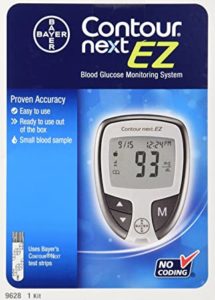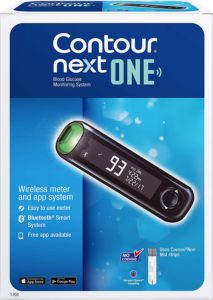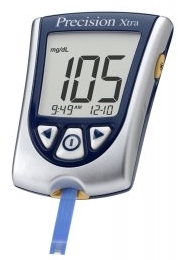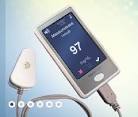Good Blood Sugar Levels
So what is considered to be a good blood sugar level?
Maintaining good blood sugar levels is the optimal way of being able to keep up with maintaining your diabetes and keeping your body healthy. Good blood sugar levels are generally been said to be good when they fall in between the 80 to 125 range. Otherwise, if they fall below you could be hypoglycemic and if they fall too high then you can be hyperglycemic. Both of which can start causing medical problems and diabetes complications, which if left untreated can lead to a lifelong medical battle.

There are general guidelines that have been set by the American diabetes association regarding criteria by which doctors and physicians go by when determining what is considered a good blood sugar level, a low blood sugar level, and what is considered high.
Having a chart that allows people to know what their good blood sugar levels are will allow them to feel good when they meet those areas and they know that they are maintaining their diabetes.
Normal Blood sugar Levels
For a large portion of healthy people, these levels would be the normal blood sugar levels:
Between 4.0 to 5.4 mmol/L (72 to 99 mg/dL) while fasting.
Up to 7.8 mmol/L (140 mg/dL) 2 hours after eating.
For diabetics, these would be the blood sugar level targets.
Before meals: 4 to 7 mmol/L for people with type 1 or type 2 diabetes.
After meals: under 9 mmol/L for people with type 1 diabetes and under 8.5mmol/L for people with type 2 diabetes
Why are Good Blood Sugar Levels so Important?
It’s really important that you make every effort to keep your blood glucose levels under control as best you can. If you have levels that are too high and they remain high for long periods of time, this will certainly increase the risk of developing complications of diabetes.
So What are the Main Complications of Diabetes?
Nerve Damage (diabetes neuropathy): Diabetic peripheral neuropathic pain occurs when the diabetic or person is having trouble seeing, using their muscles and limbs, and is in just a great amount of pain from overworking them.
Retinal Disease: Diabetes is the leading cause of preventable blindness.
Heart Disease: Together, heart attacks and strokes are the most important complications of diabetes type 2. They are also among the most preventable.
Foot Damage: Diabetics are more susceptible to foot problems than healthy people. When Diabetics cut themselves, or have an ulcer or even just a blister, this can lead to infection and if not treated can certainly cause life-threatening problems.
High Blood Pressure: Diabetes makes the blood vessels stiffer and in turn they are less able to relax, increasing the pressure inside the blood vessels
After all who wants to worry about their blood sugar numbers all the time when you can find what works best for you so that you can be stress-free and know that you have your diabetes under control?
Make sure you visit your healthcare member and find out what your blood sugar levels should be – Most of the time when a person first finds out that they are diabetic, the doctor will ask them to monitor their blood glucose levels for a certain period of time and then they will have them come back into the office and compare them in order to find what good blood sugar levels are for them.



 The Contour Next One is a great option if you are on a tight budget. However, users also need to pick up the additional tools necessary to use it.
The Contour Next One is a great option if you are on a tight budget. However, users also need to pick up the additional tools necessary to use it.




 These particular meters work by drawing interstitial fluid through the sweat glands in the skin by using a small electric current. This electric current is so small that the only real discomfort associated with using the device is some possible irritation caused by wearing the device around the wrist or arm, and this is usually no more uncomfortable than wearing a large watch or MP3 player. The
These particular meters work by drawing interstitial fluid through the sweat glands in the skin by using a small electric current. This electric current is so small that the only real discomfort associated with using the device is some possible irritation caused by wearing the device around the wrist or arm, and this is usually no more uncomfortable than wearing a large watch or MP3 player. The 
 Although there are various technologies being used to develop non invasive testing devices including florescent technology, electromagnetic sensing, mid-infrared spectroscopy and ultrasound technology among other technologies, not all have received FDA approval yet. However, the GlucoTrack has already received the CE Mark approval for use in the EU (European Union).
Although there are various technologies being used to develop non invasive testing devices including florescent technology, electromagnetic sensing, mid-infrared spectroscopy and ultrasound technology among other technologies, not all have received FDA approval yet. However, the GlucoTrack has already received the CE Mark approval for use in the EU (European Union).
 Although hypoglycemia typically occurs when you’ve not eaten, this is not always the case. Sometimes the symptoms can occur after eating certain foods high in sugar, triggering the body to producing more insulin than needed. This condition is known as postprandial hypoglycemia or reactive hypoglycemia and it can occur in people who have undergone stomach bypass surgery. However, it can also occur in individual who haven’t undergone this surgery.
Although hypoglycemia typically occurs when you’ve not eaten, this is not always the case. Sometimes the symptoms can occur after eating certain foods high in sugar, triggering the body to producing more insulin than needed. This condition is known as postprandial hypoglycemia or reactive hypoglycemia and it can occur in people who have undergone stomach bypass surgery. However, it can also occur in individual who haven’t undergone this surgery.